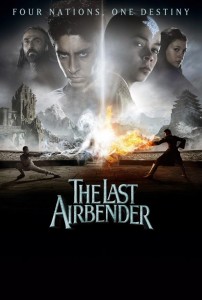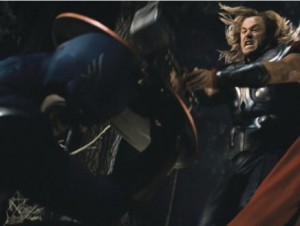Building a world from scratch can be difficult. As I said the last time, you’ll find that each detail needs to be woven into the world and into other details as you evolve from the central point. But, while this is the natural course of events, one has to remember that there are still some restrictions to just how far you can go.
Some time back I wrote about the fact that everything needs to be rooted in the real world on some level. It’s not that you should be restrained from letting your imagination go wild. But as you let that imagination run wild, there will be details that are going to need to be there for the sake of just making it feel like something people can relate to. A truly abstract world is not one that anyone will be able to recognize, understand, or become attached to. They may analyze it, deciphering it a bit at a time, but as they do they will inevitably do so by comparing it to the real world. No matter what you do, someone will try to tie it to the world they know – and that’s not a bad thing, just a natural one.
So the question is really… how far can you go before it starts to become unreasonable?
Wading Into The Unbelievable

The question isn’t easily answered because the idea of what is and isn’t acceptable is almost purely subjective. You’re going to find some people with a very low tolerance for anything out of the ordinary and you’re going to find others who’ll believe anything you say. Like in most situations where you’re fabricating the truth, it’s more about having a practiced hand and a good read of the situation than anything. A seasoned hand will be able to sell you almost any idea without question and you’ll happily take it, but a new writer…?
For those in the community just starting, and even those who are a few years into the profession, it could be a tricky thing to make people put aside their disbelief and be wrapped up in your world. Complexity surely helps, the more detail your world has the more real it can feel to the reader, but a complicated world can quickly devolve into complete nonsense for people who don’t buy it. A complex world that makes sense and feels reasonable to the reader will enthrall them, a similarly complex world that doesn’t feel reasonable will send them running.
So, a few things help to keep in mind…
1) Test The Temperature Of The Room
This is a common piece of advice that deserves repeating often: do your market research. This will often get passed around by authors as “always keep reading” but it should be put as “always keep an eye on culture”. Reading will show you a lot of trends on its own, but the full culture around you will show you things about the potential audience that you should be aware of – especially with popular culture. This isn’t to say that you should find what is most popular and then duplicate it (though many take it that way) but rather that everything about what is popular can tell you something about the culture as it stands today.
One great example of this is in the field of speculative fiction where you’re finding a lot of YA oriented dystopian novels. Hunger Games, Divergent, and the Maze Runner have been successful as novels and spawned film adaptations. The general idea now is that dystopia fiction is a hot commodity at the moment, but there’s more to learn from it than that.
One of the things all of them have in common is the sense of isolation of a specific group of people for any number of reasons. Look too closely and any of these societies make very little sense, but if you take only a brief superficial glance at them you’ll realize that they reflect a lot of concepts teenagers are fairly familiar with such as cliques, classism, and being tested while being expected to meet the expectations you generally don’t agree with.
In the end, each of these takes a simple concept in the real world and then expands upon them to an extreme. That extreme, while nonsensical when you look at it too closely, still reflects something in the real world – especially in a young adult environment. By understanding the audience that would be receiving these stories, it’s easy to anchor otherwise unbelievable concepts into something they’re familiar with.
2) Know Where You’re Going
The second thing to keep in mind is just where you intend to go with their suspension of disbelief. A while back I spoke about how the ending of Mass Effect 3 caused their otherwise loyal fanbase to begin to foam at the mouth. There were a lot of reasons thrown around and I objected to several of them when they started to treat it like a legal matter, but there was still a lesson to be learned from the incident. The fact of the matter was, it wasn’t merely that the audience’s expectations weren’t meant, it’s that their expectations were the complete opposite of what they were given.
You could honestly call this the M Night Shyamalan effect – the act of a twist completely derailing the rest of the movie up to that point because the creator didn’t think it out too well. Every time you do it, you’re essentially flipping the coin, but eventually you’re going to hit a point where people just stop buying it. Look no further than the reception of M Night’s movies in the last few years to see examples of that backfiring.

But the issue at hand is that you need to have an idea of where you’re going to go with your biggest events before you get there. You have to make sure that anything truly unbelievable needs to have somehow naturally evolved from the content of your story. So, to do this you’re going to need to make sure that you know where it’s all going before you get there and make sure that it all lines up. If you don’t, you’re just throwing something onto the rails and waiting for the train to fly off it.
Mind you, this won’t always work, but it’s still something that needs to be done. Some would argue that the Mass Effect series did make efforts to line up, but others would just as easily argue that it didn’t do it well enough. Any good twist or outrageous event is going to be one that makes sense in hindsight, even if you can’t see it coming. The one time that M Night did make a twist work, it was one that had breadcrumbs in the film the entire time.

3) Use Elevated Platforms
And, for that matter, one of the reasons why that particular twist worked is because the rest of the film started off with an elevated standard of weird. You see it all the time, especially with the advent of the superhero craze – an audience member will reject the logic of an action and have someone immediately respond to them, “we’re watching a movie about a guy who can fly and that’s what you don’t believe?”
For a speculative fiction writer, this is probably the best reaction you can get, because it means people have already suspended their disbelief about some elements and are willing to do it for others. A good way to go about this is to essentially start off with something that is already generally accepted despite the lack of logic behind it: flying people, ghosts, dragons. These are things which you know, from experience (or market research) that the audience has generally decided they’re willing to take. And, because they’re willing to take that already, you can use them as a stepping stone to go even stranger without worrying too much about going too far. If you start off a story with them already accepting something strange, they’re going to be much more likely to accept something stranger. Meanwhile, if you start off with the mundane, you may lose them once it finally does go strange.

This isn’t bullet proof, but it does give you an early advantage that will give you more room to move. In fact, that advantage will give you another method of getting past the defenses…
4) Keep A Foil Handy
One of the benefits of using something that people accept but know is ridiculous is that it will provide you a smoke screen of sorts. As I said before, superheroes make great use of one truly absurd element cloaking others around it and allowing the rest of them to work. A good example of this is that, once audiences were familiar and accepting of the idea of a man with a high tech powered armor, it wasn’t too hard to make that same audience accept that Norse gods were totally a thing too.
These things appear to be mutually exclusive and incompatible, and it can be tricky to make them mesh together, but if you’re willing and able to put in the effort to make those things work with each other the genre’s trappings will make it so much easier for it all to be accepted. By keeping one unreasonable but acceptable thing handy, you can introduce new ones just as easily without much issue (provided you make them all compatible).

And for proof of this, just remember that after a man in a suit of armor and a Norse god they also thawed out a 1940s super-soldier and recruited a man who can quadruple in size during a hissy fit thanks to exposure to lethal levels of radiation. Yet, despite all of this, you rarely hear someone who is willing to read these comics or watch these movies declare that they don’t buy any of the genre’s common tropes – they almost always complain about the story’s logic instead. Think about that and realize that, once you’ve established a base level of weird, you can pretty much do whatever and they’ll only demand you be internally consistent.
However, this requires one last thing…
5) Ease Them Into It
All of this requires you give them time to acclimate. If you go full throttle into as weird as possible as fast as possible, you’re probably going to leave some people in your dust. You can’t dump the strangest and most crazy concept on your audience right out the gates, you give them the more fundamental things first. To put it another way, could you imagine how well that whole Marvel Cinematic Universe experiment would have gone if the first movie out the gates was Guardians of the Galaxy?
That’s not to say GotG wasn’t a good film. But, even with the track record of solid, enjoyable films that came out of Marvel before then, people were a little wary about the idea of a talking Raccoon and his sidekick the barely verbal tree hopping around in starships. If it had been the first film out of the gates, we may be seeing a completely different landscape in film at this point, and even in the source materials it was a concept that didn’t come until decades after other stories had been established in other titles. But if you ease the audience into it and then throw your weirdest stuff at them once they’ve been primed?
It can be awesome and ridiculous.
(I write novels. There’s some weird stuff in them. I also have a twitter account. It’s run by a weird guy. Check them out!)















